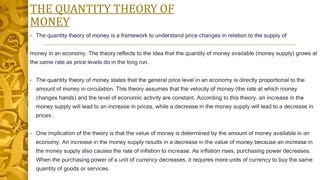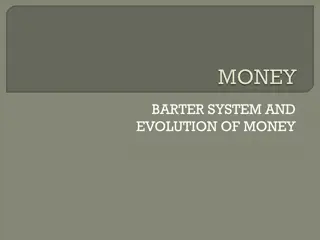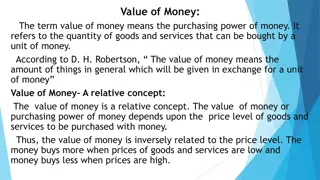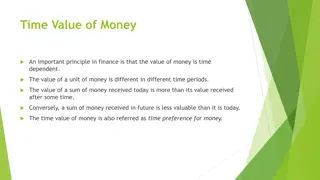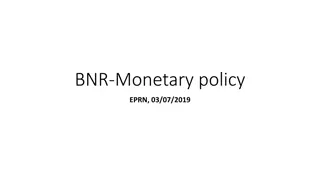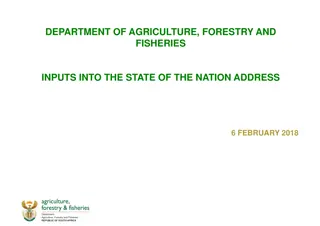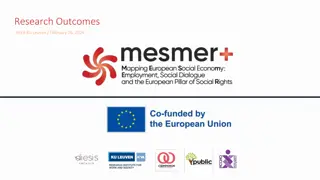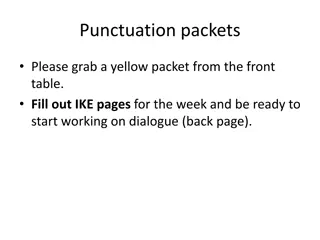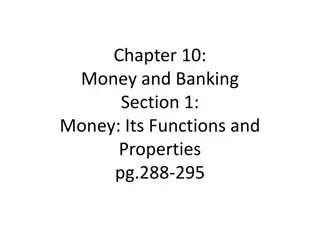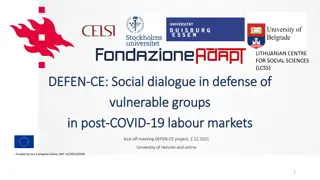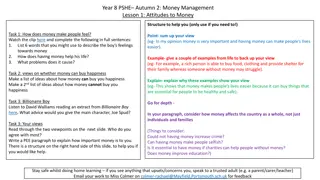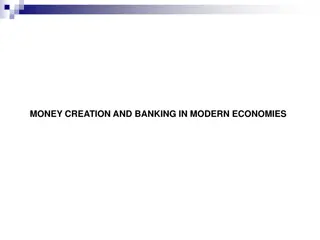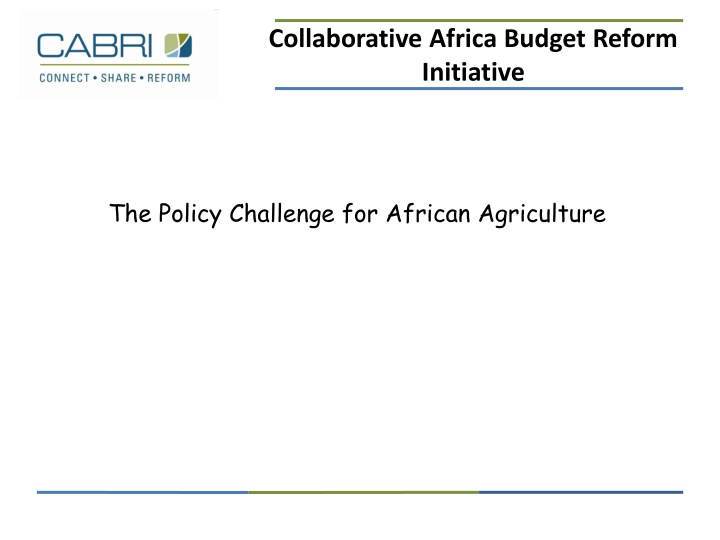
African Agriculture Policy Challenges and Reforms
Uncover the policy challenges and reforms facing African agriculture, highlighting the need for collaborative budget initiatives and development theory diversification. Explore the sources of production increase, productivity metrics, constraints, and the continent's response through initiatives like CAADP.
Download Presentation

Please find below an Image/Link to download the presentation.
The content on the website is provided AS IS for your information and personal use only. It may not be sold, licensed, or shared on other websites without obtaining consent from the author. If you encounter any issues during the download, it is possible that the publisher has removed the file from their server.
You are allowed to download the files provided on this website for personal or commercial use, subject to the condition that they are used lawfully. All files are the property of their respective owners.
The content on the website is provided AS IS for your information and personal use only. It may not be sold, licensed, or shared on other websites without obtaining consent from the author.
E N D
Presentation Transcript
Collaborative Africa Budget Reform Initiative The Policy Challenge for African Agriculture
Global Context Development theory based on diversification & industrialisation Donors neglected agriculture since 1970s (MFI moved to rural development, CGIAR reduced profile ) Limits to growth ignored, until turn of century when climate and water constraints raised profile (eg FAO, IWMI, WDR 2008) Some rethinking of development theories (eg Lipton 2005) World food crisis 2008. Perfect Storm . Food-energy-water- climate nexus Debate about pro-poor growth and agriculture (IFPRI) 2
Production 140 East Africa 130 Central Africa 120 North Africa 110 Southern Africa 100 Western Africa 90 80 70 60 50 40 1990 1991 1992 1993 1994 1995 1996 1997 1998 1999 2000 2001 2002 2003 2004 2005 2006 2007 2008 2009 2010 2011 3
Sources of Increase in Production 90% 80% 70% 60% 50% 40% 30% 20% 10% 0% -10% East Asia Latin America and Caribbean South Asia Sub-Saharan Africa World Arable Land Expansion Cropping Intensity Yield Increases 4
Productivity: Labour South Africa Egypt Morocco Algeria Sudan Kenya Guinea Tanzania Rwanda Angola Ethiopia Mozambique 0 500 1000 1500 2000 2500 3000 3500 Constant 2000$ per worker 6
Constraints Water Inputs Machinery Farm practices: new green revolution, conservation agriculture Research and extension (and private involvement in this) Land rights (private .v. strengthening communal) Women s role Ability to expand area Infrastructure, especially roads Labour supply, especially with HIV/AIDS Markets and financial services 7
African Response CAADP (2003) arising out of NEPAD (land/water management, market access, food supply and hunger, research) Growth target of 6% Public expenditure target of 10% CAADP Compacts and Investment Plans in 30+ countries AfDB s Africa Food Crisis Response Framework and Agriculture Sector Strategy (2010) SADC s Regional Indicative Strategic Development Plan, with agriculture as one of 4 pillars ECOWAS Common Agricultural Policy Many African countries now have agricultural strategies 8
CAADP Targets 15 10 Growth target of 6% 5 Percent 0 Togo Malawi Swaziland Namibia Comoros Mauritius Djibouti Tanzania Gabon Madagascar Ghana Guinea Botswana Mozambique Rwanda Zimbabwe Niger Mali Egypt Cameroon Sierra Leone Benin Kenya Equatorial Guinea Mauritania Gambia Burundi Congo Dem Rep Chad Seychelles Senegal Zambia Sao Tome & Principe Lesotho Eritrea Centra Africa Rep Cote d'Ivoire Sudan Algeria Morocco Burkina Faso Nigeria Angola Ethiopia -5 -10 1995-2010 2003-2010 CAADP target -15 30 Average Annual Growth Rate CAADP Target 25 Public expenditure target 10% of total public expenditure to agriculture 20 Percent 15 10 5 0 Morocco Rwanda Botswana Congo Dem Rep Malawi Sudan Swaziland Djibouti Sao Tome & Principe Sierra Leone Togo Tunisia Burkina Faso Egypt Kenya Senegal Ethiopia Cote d'Ivoire Ghana Niger Africa average Centra Africa Rep Tanzania Nigeria Benin Cameroon Chad Congo Rep Lesotho Mauritania Zambia Mali Zimbabwe Namibia Uganda 9
Public Agriculture Spending 12 10 East Asia and Pacific (8 countries) 8 Latin America and Caribbean (10) Percent South Asia (7) 6 51 Country average (51) Sub-Saharan Africa (10) 4 Middle East and North Africa (7) Europe and Central Asia (9) 2 0 1985 1990 1995 2000 2005 10
Investment in Agriculture Agricultural capital stock per worker is $2200 for Africa, $1700 for S Asia, $1300 for E Asia (especially low for China), $16500 for Latin America and $90,000 for developed Agriculture has the highest share of total investment in the world (ie 13.9%, compared with 9.7% for Asia, 6.2% for Latin America and former CIS and 1.9% for developed countries) For all developing countries 78% of agri investment is private on-farm investment, government is 19%, ODA is 2% and FDI 1% But FDI is growing. Investment funds have a stock of 7% of agri private investment 11
Market Opportunities 200 180 160 Index (Real Prices, 2005 = 100) 140 120 All food Fats and oils 100 Grains Beef 80 Urea 60 Sugar 40 20 0 1990 1991 1992 1993 1994 1995 1996 1997 1998 1999 2000 2001 2002 2003 2004 2005 2006 2007 2008 2009 2010 2011 12
Smallholder .v. Commercial Commercial often promoted because considered likely to grow fastest and often contributes to exports But linkages are less good for commercial, so multiplier effects and poverty reduction is lower Compromises can work especially outgrower schemes Commercial may give higher returns per dollar and per person, but not necessarily higher per hectare or per litre of water Smallholders can produce higher quality (eg coffee) 13
Subsidies Washington consensus worried by: Crowding out of private development and undermining markets Heavy and unpredictable demands on public finance Difficulty of targeting benefits to poor Risk of giving incentives that embed inefficient practices Evaluations of subsidies show some benefits and mixed conclusions So recent rethink of this consensus, provided that Clear objectives and rules, to create market confidence Packages adapted to local conditions Complemented by other support Procurement through the market to avoiding undermining it 14
Water Water likely to be the most limiting natural resource Over 70% of global water use is for agriculture and use in increasing by 50% every 20 years Only 4% of African land is irrigated Lots of scope for improved efficiency of water use Techniques for improving soil moisture (eg conservation agriculture, but also water harvesting) Improvements in managing water rights Groundwater opportunities Improving efficiency within irrigation systems Often said that irrigation gives poor returns in Africa, but this is questioned in recent studies 15
Energy 350 World Food Index 300 World Energy Index Price Index (2006 = 100) 250 World Maize Index 200 150 100 50 0 2008 2009 1992 1993 1994 1995 1996 1997 1998 1999 2000 2001 2002 2003 2004 2005 2006 2007 2010 2011 2012 2013 16
Climate Change: the Challenge African farmers amongst the most vulnerable in the world Risks include: Temperatures going above crop tolerance thresholds Droughts and floods (most dramatic) More unpredictable rainfall patterns (possibly most impact) Average rainfall trends more mixed (N&S drier, E&W mixed), with some parts (Sahel?) getting wetter Global analysis suggests rural incomes could be over 10% lower by 2050, with a 2oC temperature rise But also suggests that there are good options for adaptation: Improving soil moisture (CA, water harvesting, groundwater ) Crop varietal improvement Livestock Disaster early warning 17
Climate Change: the Response Difficulties of modelling risks and so of refining response International modelling improving (eg on extreme events) Large agri-impact models expensive, time-consuming and done abroad Rapid modelling options may be more useful NAPAs were first national response, but criticised for shopping list approach (no strategy; only new actions; no funding limit, disconnected from national systems) NAPAs being superseded by NAPs addressing these issues Green Climate Fund potentially huge, and suppose to use country systems, but no agreement on modality and most African countries will struggle to show capacity to implement and supervise Lots of CC projects but very varied, poor coordination and lots of TA 18
Evidence Based Policy Formation CBA still done on many projects, though less important now Research and extension. Often very high, depending on adoption rates. Livestock. Some examples of BCR of 1.8 to 2.6, for large programmes. Irrigation. Strong for large scheme rehab. Others depend on yields, prices. Market development. Some examples of very high returns. Subsidies. Difficult to analyse. Rural roads. Long traditions, but not often applied. Logframes and results-based management growing Poverty and Social Impact Analysis focuses on poverty IFPRI Modelling of agri policy impact (linkages with other sectors) Is the evidence used in policy or project formation? Difficult link. SWAps use indicators, but PROAGRI shows the problems 20
In Summary Key Challenges and Dialogue Points 1. Should we be looking for new green revolution farm techniques (conservation agriculture, drought resistant seeds, new approaches to irrigation ) or just supporting good farming across existing techniques. Are input subsidies an efficient way of promoting new techniques? How to intervene in markets to reduce price variability, whilst also promoting market development. Establishing the right values for water and for energy to ensure efficient production choices and avoid food price rises. Does private or communal land ownership give greatest security and protection from displacement? Whether smallholder or commercial agriculture make the highest contribution to development and poverty reduction. 2. 3. 4. 6. 7. 21

